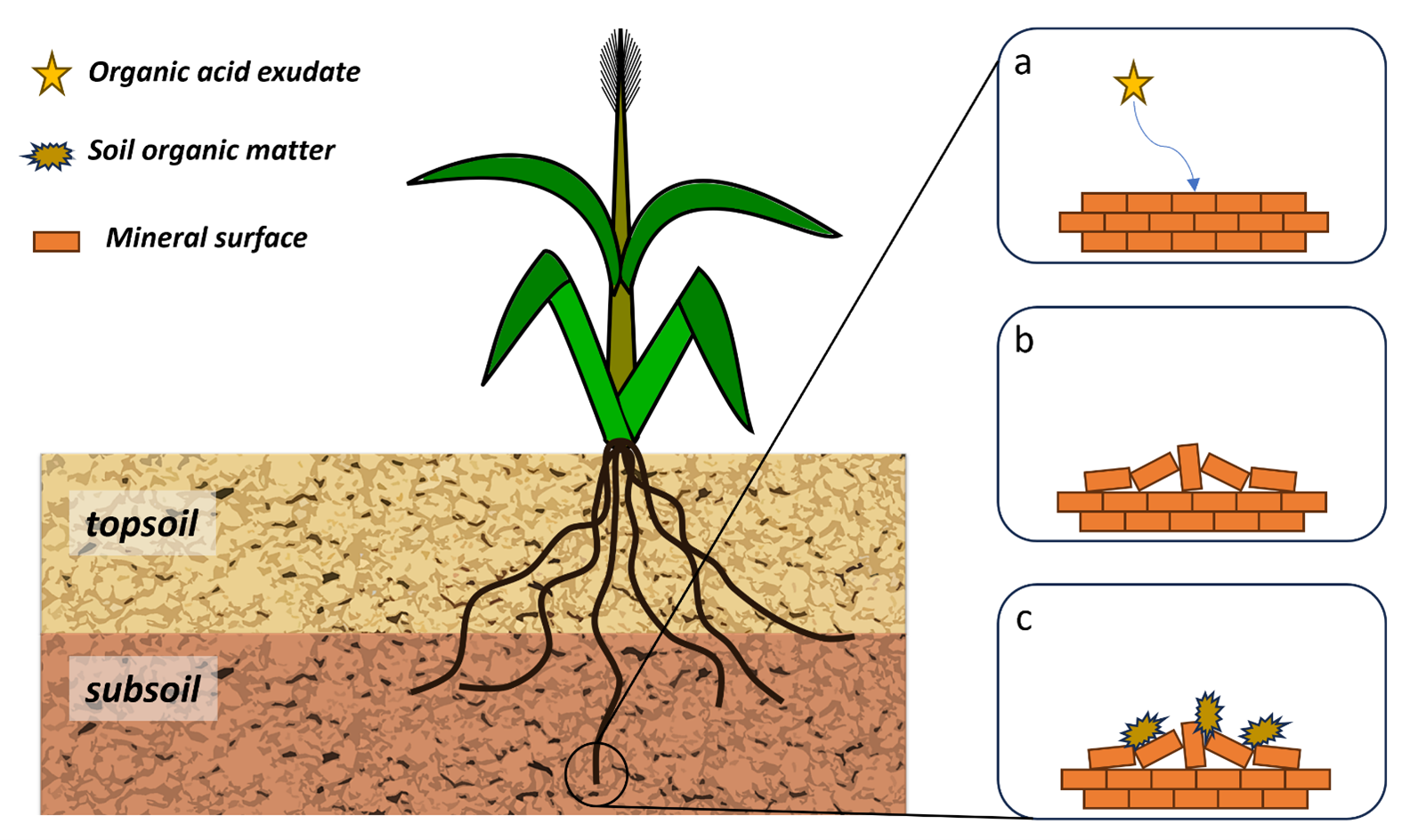Lead Supervisor: Tom Sizmur, Department of Geography and Environmental Science, University of Reading
Email: t.sizmur@reading.ac.uk
Co-supervisors: Sharif Ahmed, Diamond Light Source; Luis Carlos Colocho Hurtarte, Diamond Light Source; Daniel Evans, Cranfield University
Soils are the largest terrestrial sink for actively turned-over carbon. Storing more carbon in soils reduces atmospheric carbon dioxide levels. More than half of soil carbon is stored deeper than 30 cm in the subsoil. However, almost everything that we know today about carbon dynamics stems from our knowledge of topsoil carbon dynamics. Topsoils have been researched to a much greater extent than subsoils. Therefore, our understanding of mechanisms by which carbon is stabilised in subsoils is imperfect. A previous PhD student investigated carbon storage in temperate lowland soils and found that subsoil carbon was primarily stabilised due to interactions between organic matter and soil minerals (Antony et al 2022).
These stable interactions between organic matter and mineral surfaces are not homogenously distributed over soil surfaces and are instead concentrated in patches. It therefore seems that organo-mineral interactions on the surfaces of some minerals act as ‘nuclei’ for carbon retention in soils and therefore play a particularly important role in chemically protecting mineral-associated organic carbon from decomposition. It is widely recognised that the mineral surfaces of most subsoils are not saturated with carbon and so there is considerable opportunity to store much more carbon in subsoils, if the mechanisms of subsoil carbon dynamics are better understood.
The roots of deep-rooting plants can penetrate subsoils and, in doing so, deliver carbon, fixed from the atmosphere by photosynthesis, into the subsoil. Roots release carbon into subsoils in the form of exudates. These comprise a variety of compounds, including organic acids. There is some evidence to suggest that these exudates may accelerate the degradation of mineral-associated organic matter that is already in the soil, due to priming (Shahzad et al., 2018). However, there is also evidence that they increase the capacity for soil mineral-associated carbon storage through mineral weathering (Yu et al., 2017). Understanding the balance between priming and mineral weathering in the subsoil is vital to determine whether deep-rooting plants may enhance subsoil carbon stocks, or make them more vulnerable to degradation.
In this PhD project you will investigate the effect of plant root exudates on subsoil mineralogy and the propensity of subsoils to chemically protect organic matter from decomposition as mineral-associated organic carbon (Figure 1). You will adopt technology from medical research to create artificial rhizospheres by exposing subsoils to model compounds. You will then use techniques available at Diamond Light Source to observe mineral weathering within artificial rhizospheres and investigate the conditions under which mineral-associated organic carbon is formed.
In the first phase of your PhD you will conduct ‘bulk phase’ experiments to test a range of different organic acids commonly found in plant root exudates to quantify their fate when exposed to a range of different subsoils, and to investigate their influence on mineral weathering. These results will pave the way for more detail experiments. In the second phase of your PhD you will develop a novel method of creating an artificial rhizosphere by adopting technology used in medical research. The strength of this approach is that the artificial rhizosphere can then be subjected to high energy x-rays, available through the use of synchrotron radiation at Diamond Light Source. Therefore, you will be able to use techniques such as time-resolved diffraction, tomography, and spectroscopy with very high spatial resolution. If this was done using a real plant root, the exposure of the root to radiation would damage the biological tissues. However, the use of an artificial rhizosphere makes this approach feasible. In the final phase of your PhD you will have the freedom to design your own experiments to test hypotheses that you have developed through the observations made in phase one and phase two. This may, for example, involve making in-situ observations in the field, or using real root exudates collected from a hydroponically grown plant.

Figure 1: Diagram depicting proposed mechanism whereby the exudation of organic acids by plant roots (a) accelerates mineral weathering (b) and creates a hotspot for mineral-associated organic carbon (c) in subsoils.
Training Opportunities
During the PhD you will have multiple opportunities to engage in training and enhancement activities as an early career member of the British Society of Soil Science. You will also enrol on the Diamond Light Source Synchrotron Radiation School and have the opportunity to participate in the month-long Hercules European School which provides a comprehensive introduction to neutron and synchrotron techniques. You will also have access to MSc modules at University of Reading or Cranfield Univrsity to receive training in aspects of the PhD topic that you are unfamiliar with.
Student Profile
This project would be suitable for students with a degree in Environmental Science, Earth Science, Physical Geography, Chemistry, or a closely related environmental or physical science. Preference will be given to applicants with experience programming in R or Python.
Funding Particulars
This project has CASE support from Diamond Light Source
References
Antony, D., Collins, C.D., Clark, J.M. and Sizmur, T., 2022. Soil organic matter storage in temperate lowland arable, grassland and woodland topsoil and subsoil. Soil Use and Management, 38(4), pp.1532-1546.
Shahzad, T., Rashid, M.I., Maire, V., Barot, S., Perveen, N., Alvarez, G., Mougin, C. and Fontaine, S., 2018. Root penetration in deep soil layers stimulates mineralization of millennia-old organic carbon. Soil Biology and Biochemistry, 124, pp.150-160.
Yu, G., Xiao, J., Hu, S., Polizzotto, M.L., Zhao, F., McGrath, S.P., Li, H., Ran, W. and Shen, Q., 2017. Mineral availability as a key regulator of soil carbon storage. Environmental Science & Technology, 51(9), pp.4960-4969.

